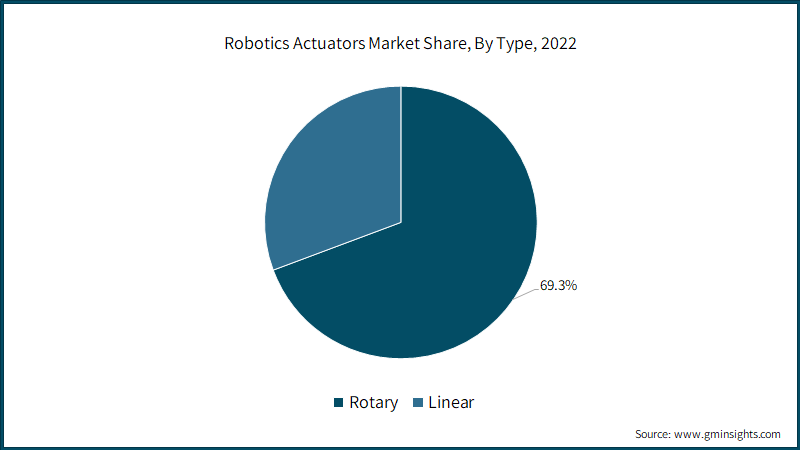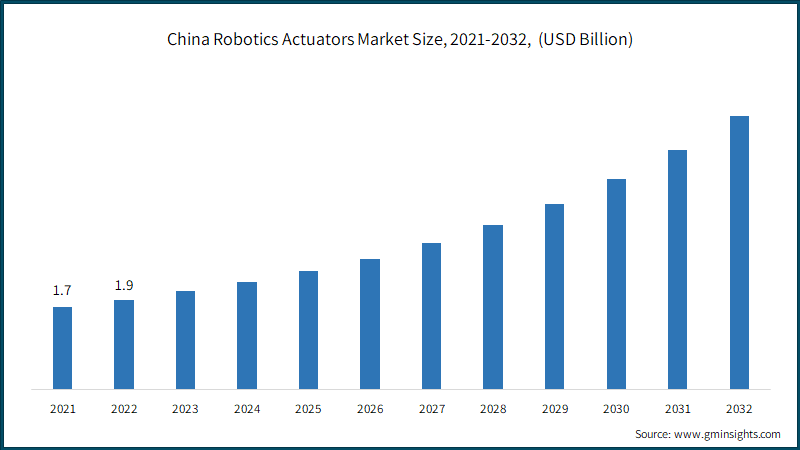Home > Semiconductors & Electronics > Automation > Robotics > Robotics Actuators Market
Robotics Actuators Market Analysis
- Report ID: GMI6718
- Published Date: Sep 2023
- Report Format: PDF
Robotics Actuators Market Analysis
Based on actuation, the robotics actuators market is segmented into electric, hydraulic, pneumatic, and mechanical. The electric segment is expected to showcase a CAGR of over 10% between 2023 to 2032. Electric actuators offer precise control, high efficiency, and faster response times, making them ideal for robotic applications requiring accuracy and speed. They are also compact, easy to integrate, and have a lower environmental impact compared to hydraulic or pneumatic alternatives. Furthermore, advancements in electric motor technology and control systems have improved the performance and reliability of electric actuators, making them increasingly attractive for a wide range of applications, from manufacturing and logistics to healthcare and consumer electronics.

Based on type, the robotics actuators market is segmented into rotary and linear. The rotary segment was valued at over USD 8.5 billion in 2022 and is expected to grow at a lucrative pace till 2032. Rotary actuators are on the rise owing to their versatility and efficiency. They offer a wide range of motions, allowing robots to perform complex tasks including rotation, pivoting, and angular movements with precision. This flexibility is essential for a variety of applications, from manufacturing and assembly to medical devices and aerospace. Moreover, rotary actuators are more compact and lightweight than their linear counterparts, making them ideal for smaller robots and applications with space limitations. As robotics technology advances and the demand for agile & adaptable robots increases, the versatility & efficiency of rotary actuators will make them a preferred choice in the market.

Asia Pacific has a strong presence in the robotics actuators market. The region is witnessing significant industrialization and automation across diverse sectors including manufacturing, automotive, and electronics. The demand for robotics actuators is surging as industries strive to enhance productivity and precision in their operations. Additionally, governments in countries including China and Japan are investing heavily in robotics and automation technologies, driving market growth. The emergence of collaborative robots (cobots) and the expansion of industries, such as healthcare and logistics, further contribute to the demand for advanced actuators. Economic growth and technological advancements in Asia Pacific make it a prominent hub for the robotics actuator industry.

